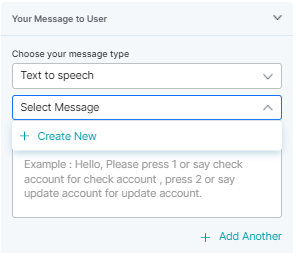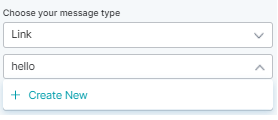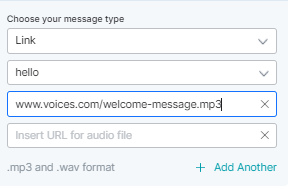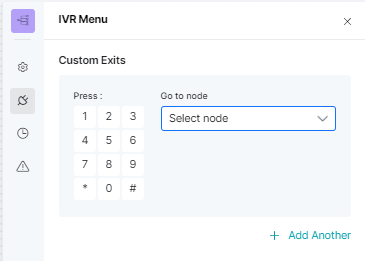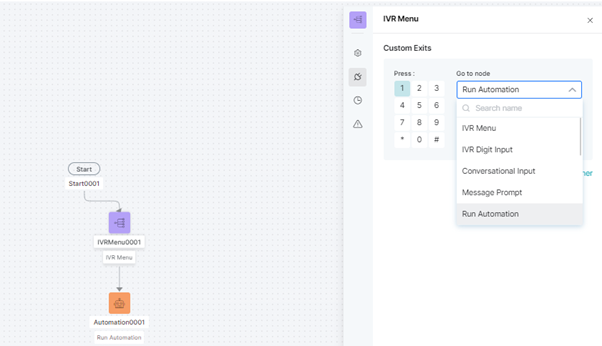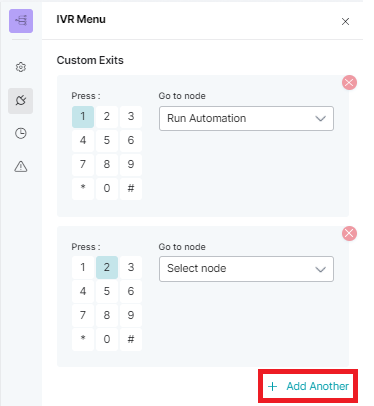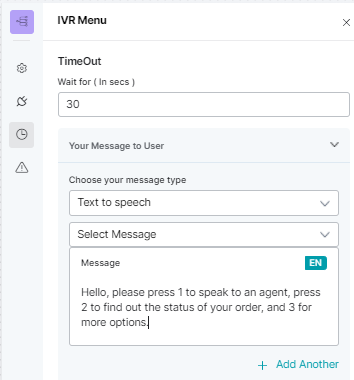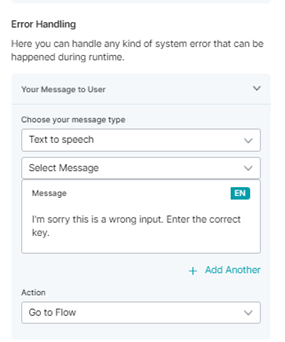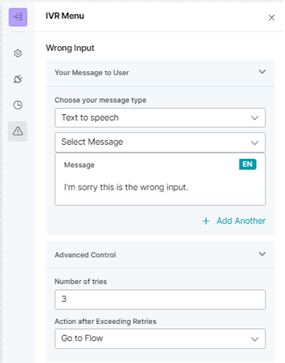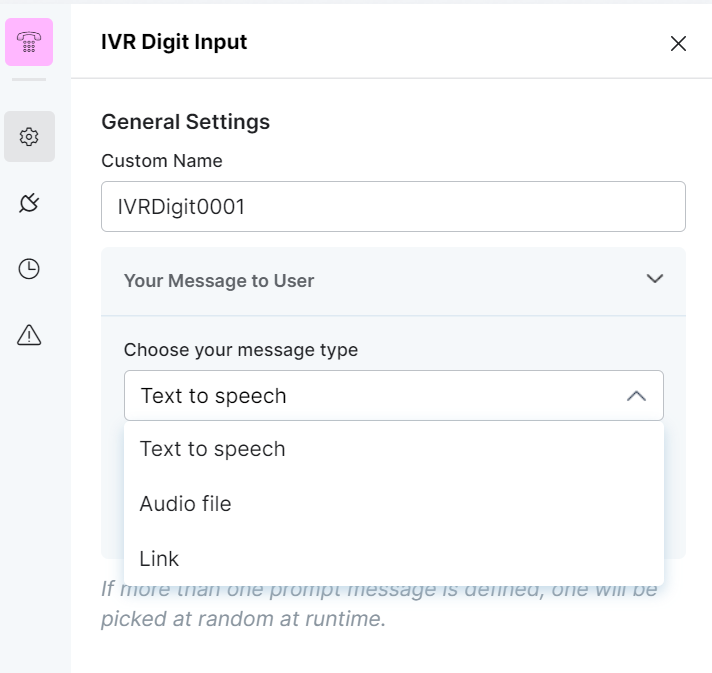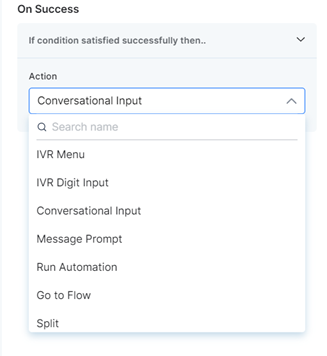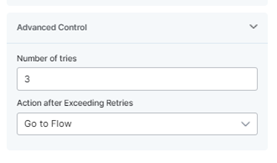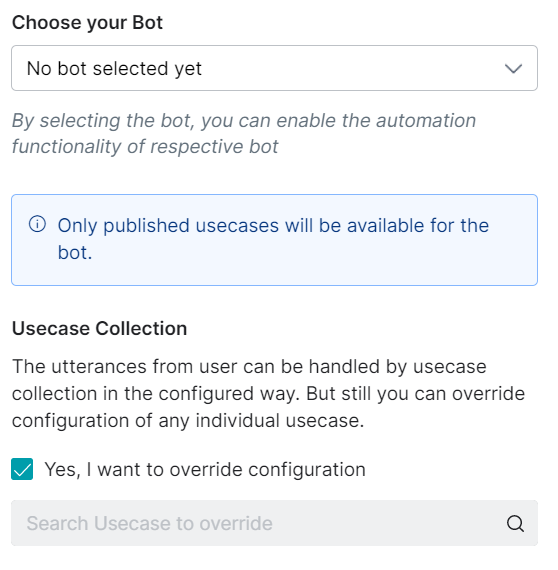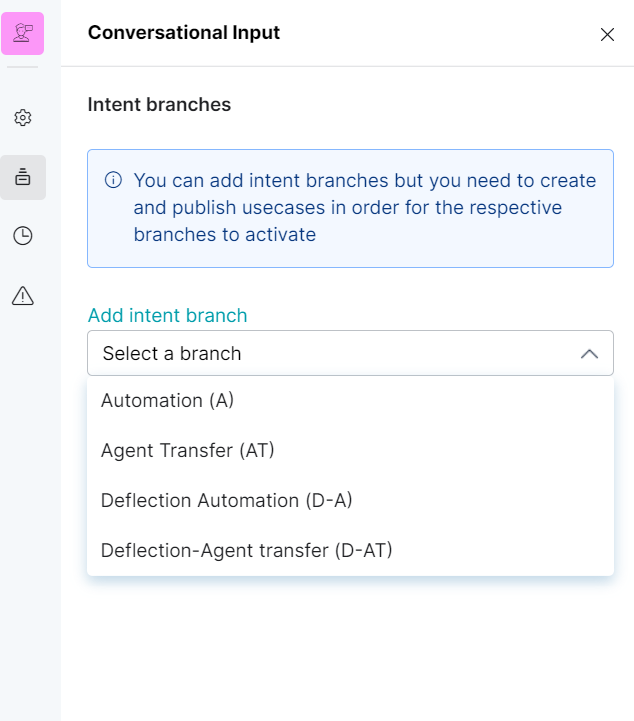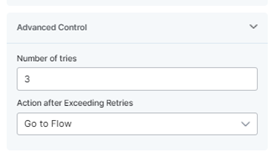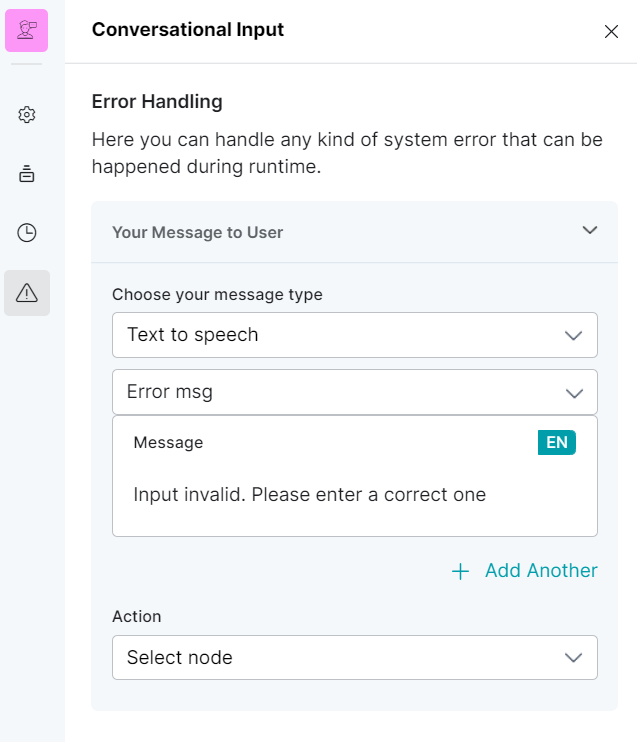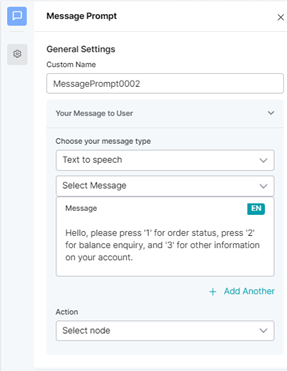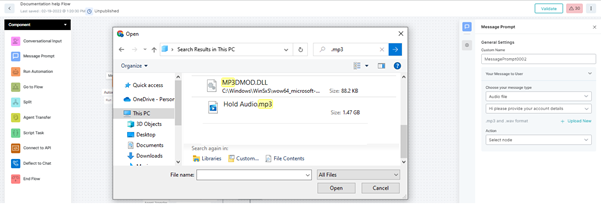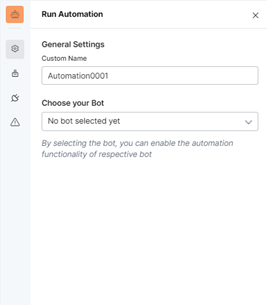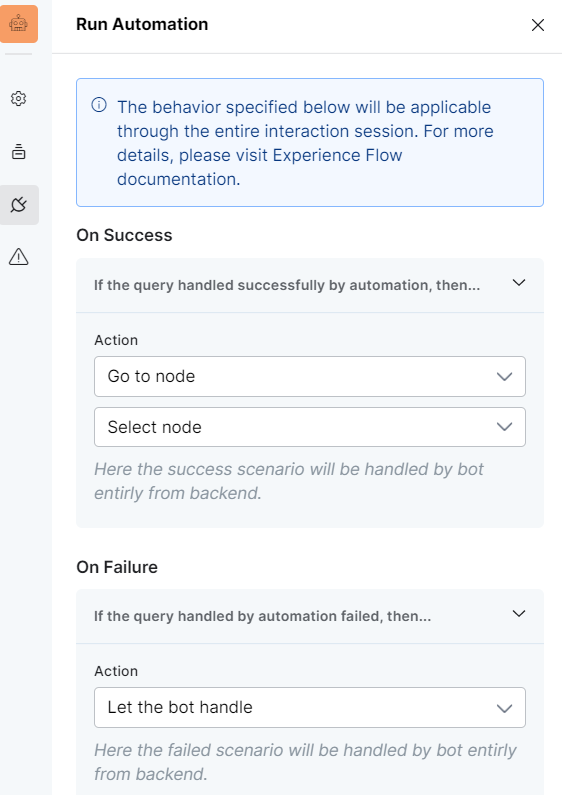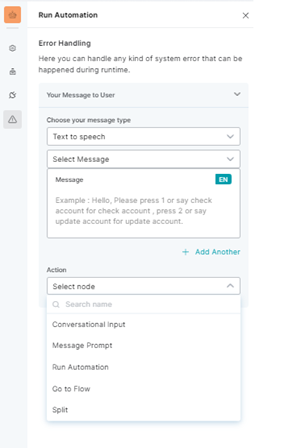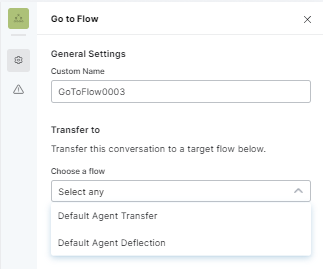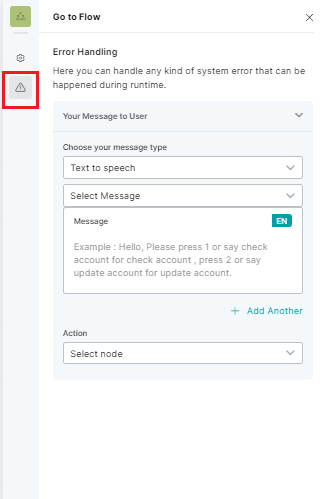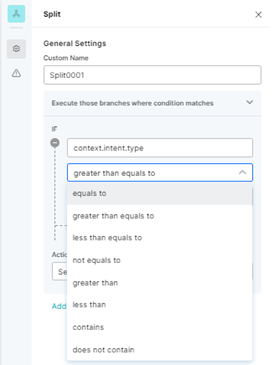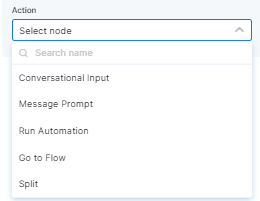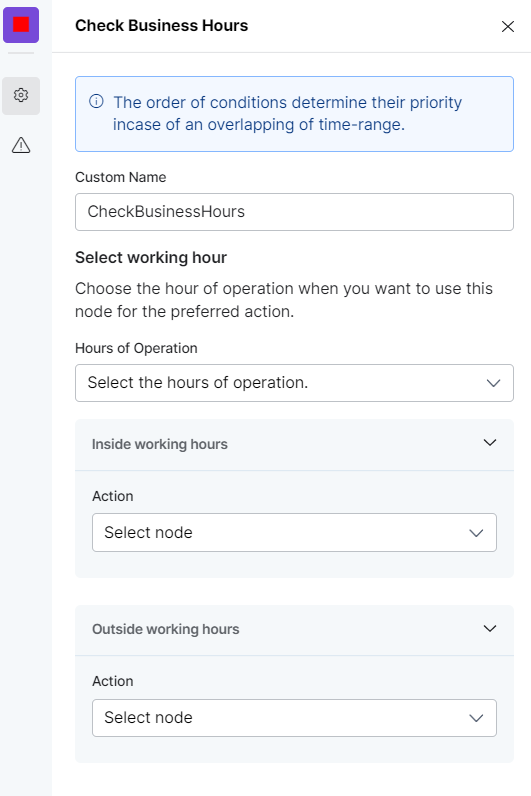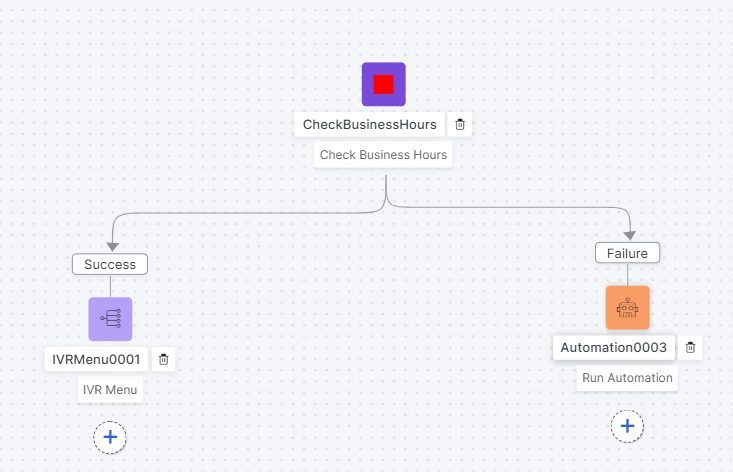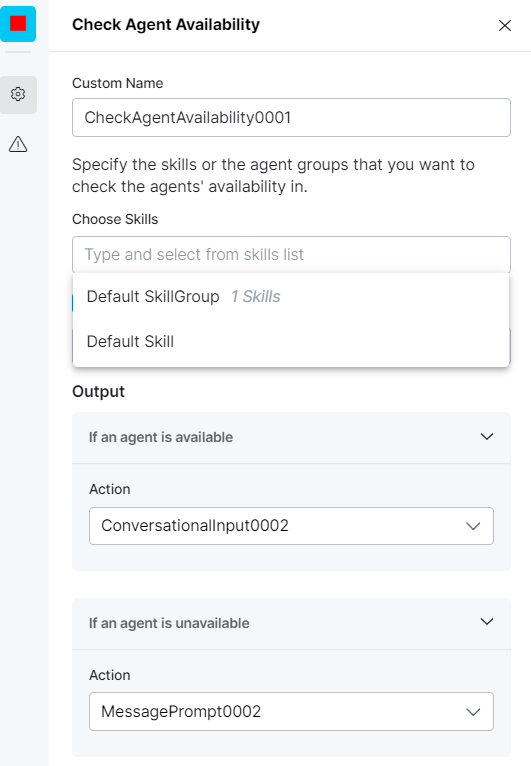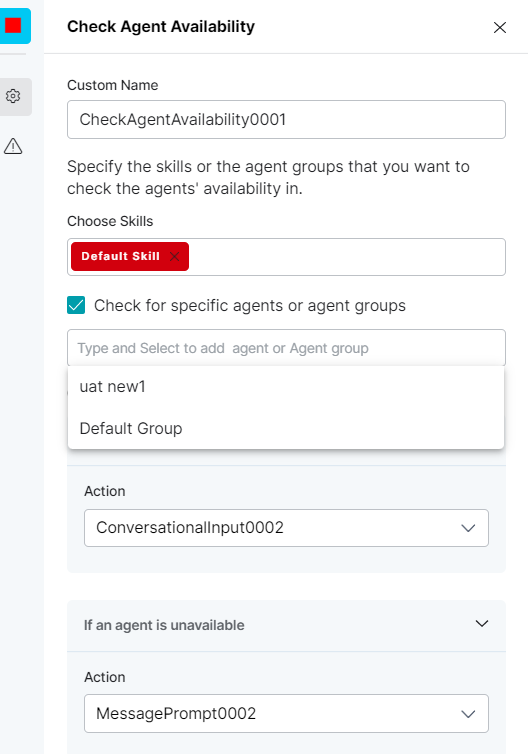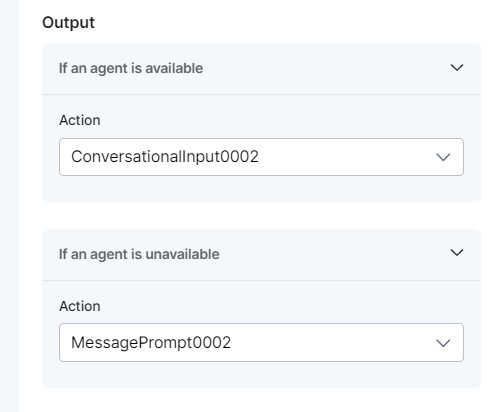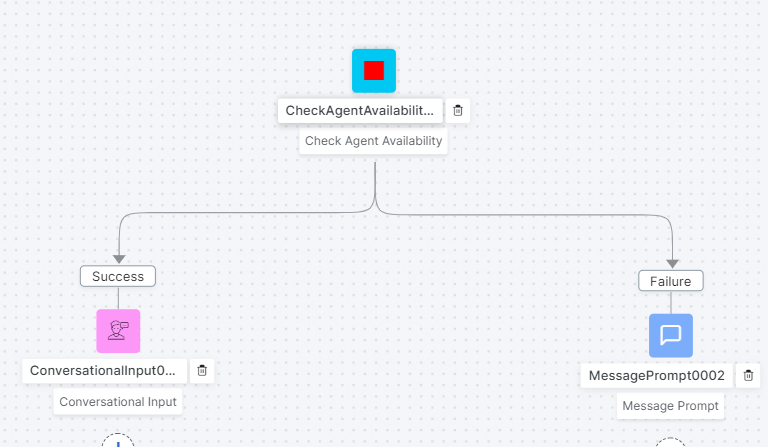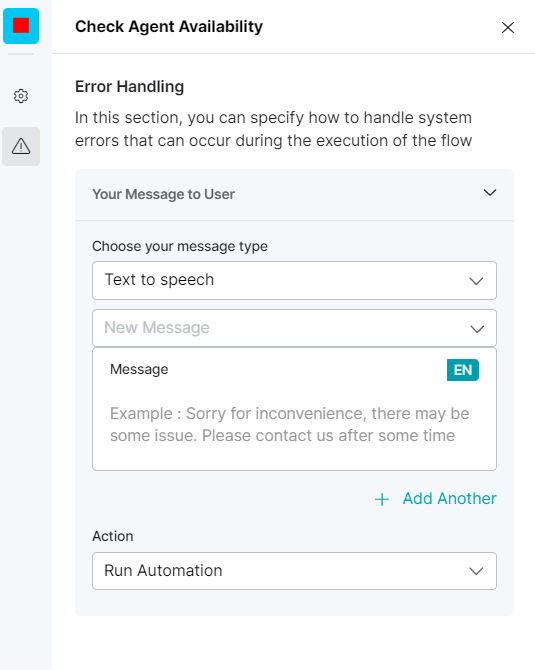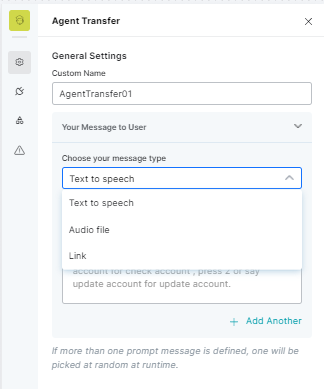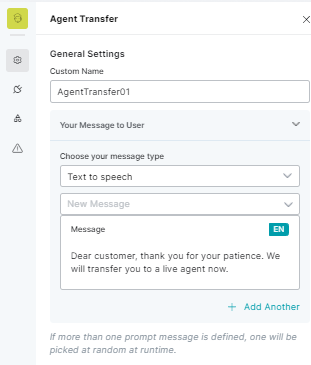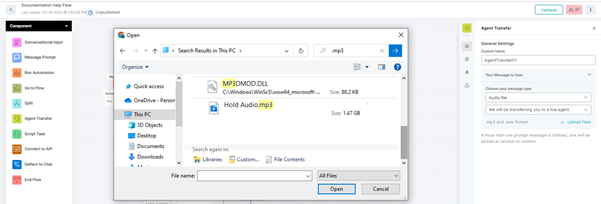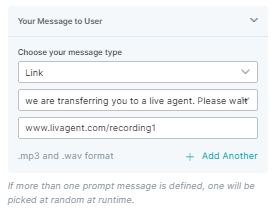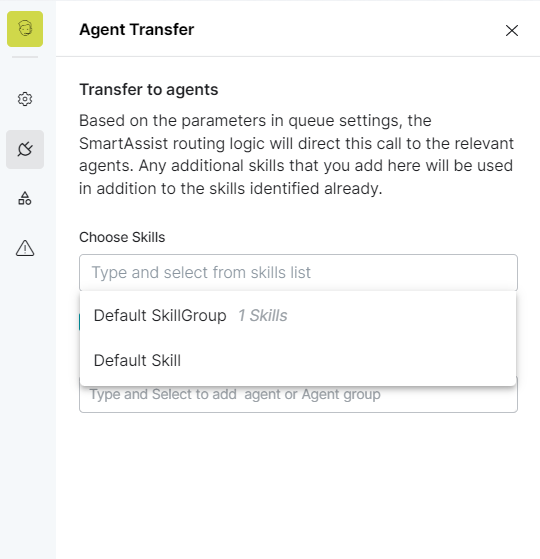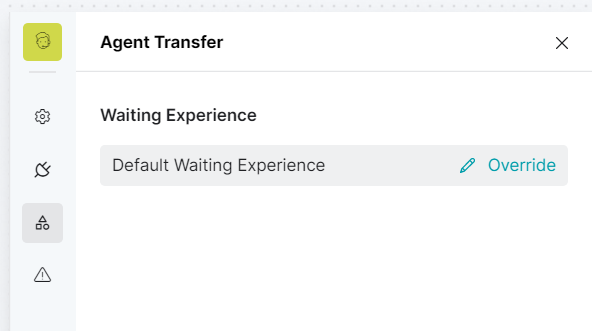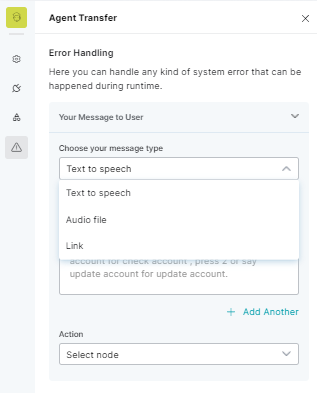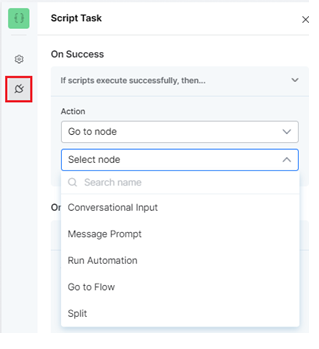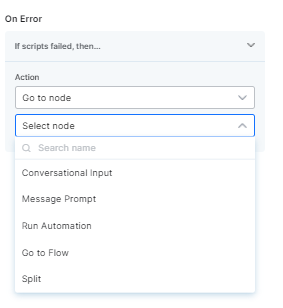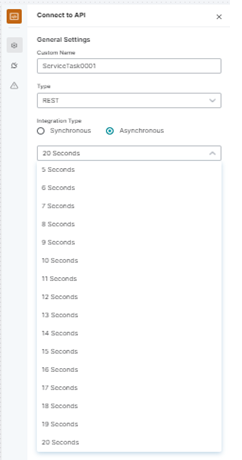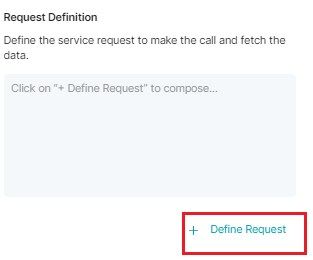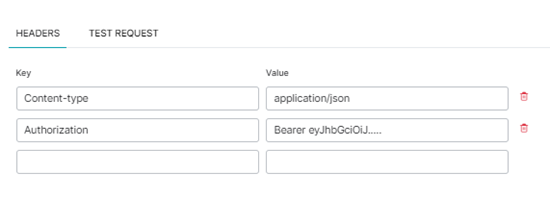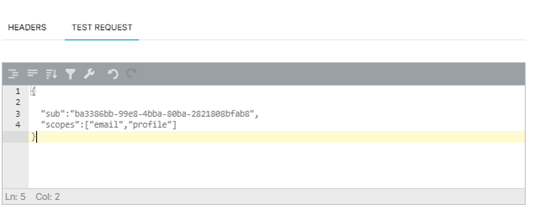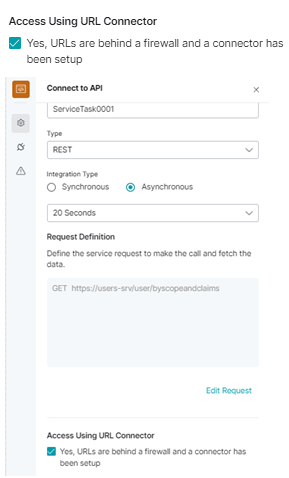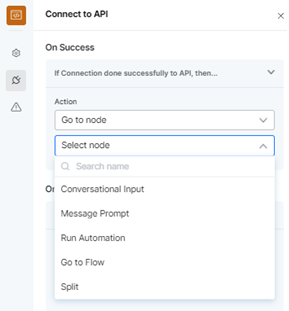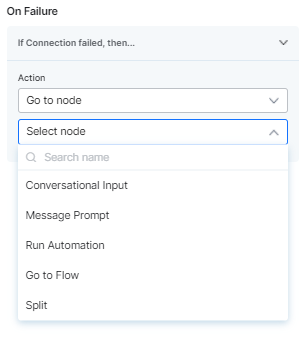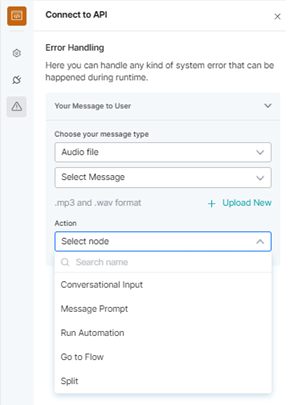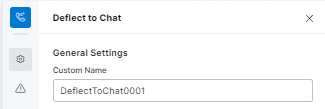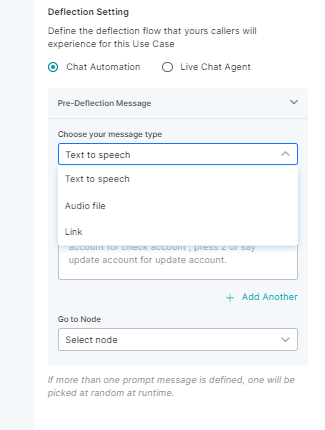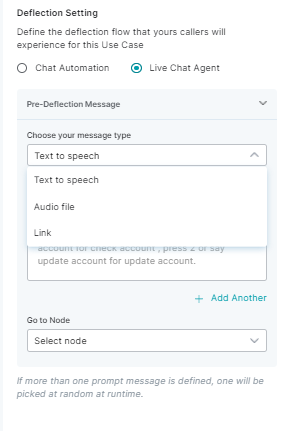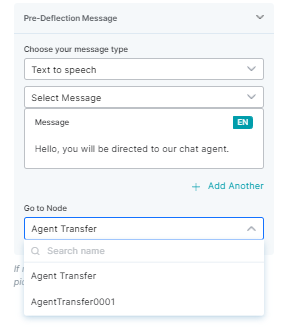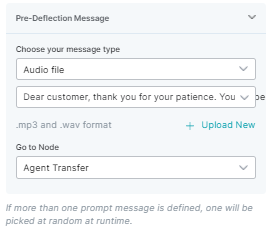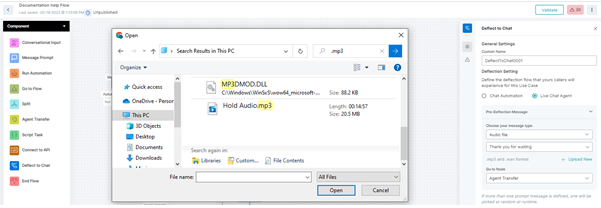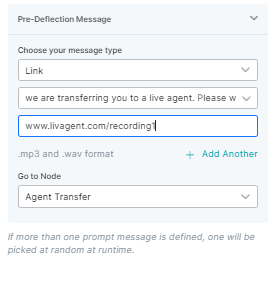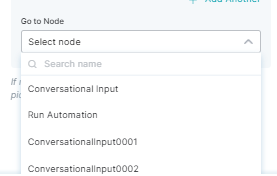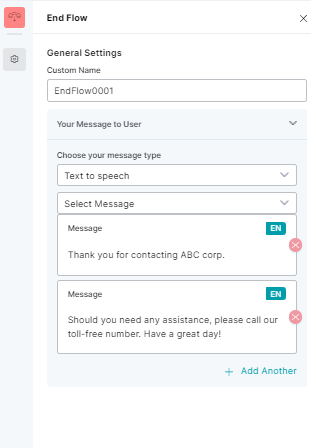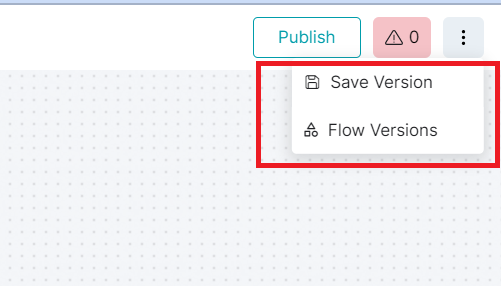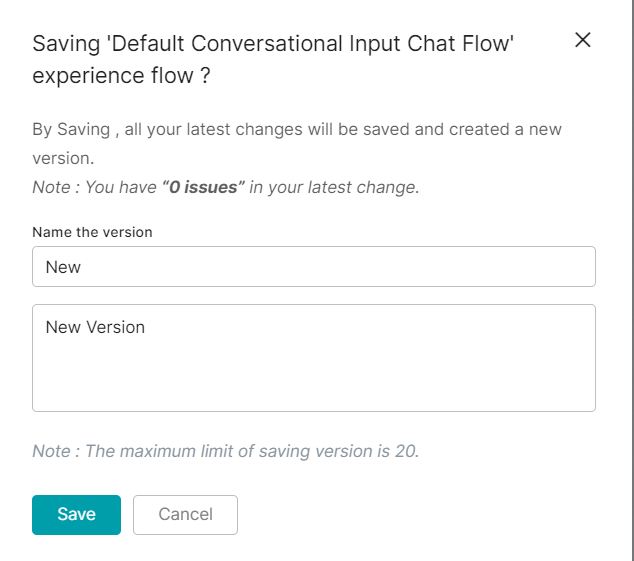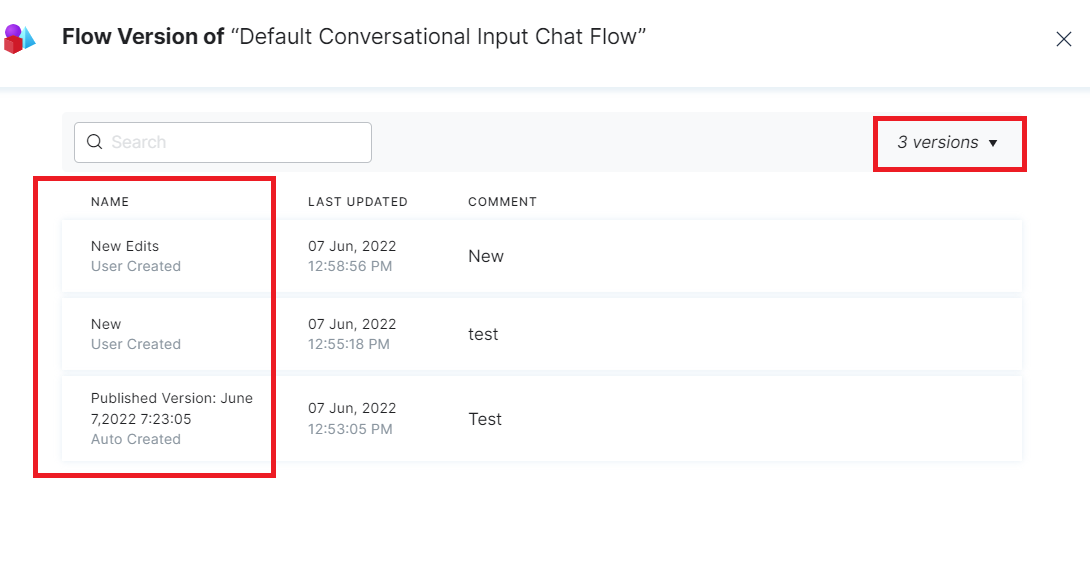IVR Digit Input
IVR Digit Input node records a non-menu interaction. It is used during dynamic interactions where a contact needs to provide the input like a phone number to proceed further. You can configure the condition for receiving the input, the action if the condition is satisfied (success flow), the timeout value in seconds for the contact’s response/input, and the error-handling use cases.
To configure this node, follow these steps:
1. Click the General Settings icon and provide the custom name.
2. Set up the message that will be played out to the customer with the same steps as IVR Menu.
3. Click the Condition icon to define the input conditions, by providing values for the following fields:
- Maximum length of digit: Define the limit for the number of digits a customer can input after which the conditional message is played out.
- Ending Keypress: Define the key to delimit or indicate the end of the customer’s input. For e.g., when “#” is pressed, it indicates the customer has completed keying in their input.
4. Define the On success flow by selecting a node from the Action dropdown list. The flow is directed to the selected node from the current node if a condition is satisfied.
5. Set up the Timeout flow by defining the following fields:
- TimeOut: Type the wait time in seconds after which a timeout event will occur.
- Your Message to User: For Choose your message type select an option from Text to Speech, Link, or audio; then, type the message, upload an audio file ( .mp3 and .wav formats are only supported for audio files), or provide a URL to the error message to be played out to the customer when a timeout event occurs.
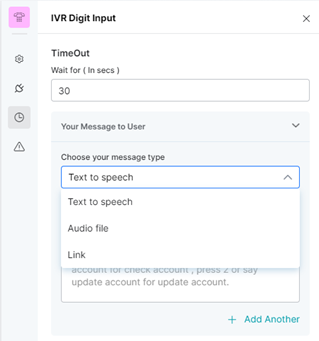
- Your Message to User: For Choose your message type select an option from Text to Speech, Link, or audio; then, type the message, upload an audio file ( .mp3 and .wav formats are only supported for audio files), or provide a URL to the error message to be played out to the customer when a timeout event occurs.
6. Under Advanced Control > Number of Tries, type the limit for maximum number of retries allowed for a customer to key in the input.
7. Under Advanced Control > Action after Exceeding Retries, select the node to direct the flow after a timeout has occurred.
8. To see the configurations for error handling and Wrong input flow, see Configure Wrong Input Flow and Configure Error Handling of IVR Menu. These configurations determine how system errors will be handled during runtime.
Conversational Input
This node is an equivalent of a bot automation interaction for an IVR key input. Based on the open-ended input provided by the customer for a welcome message or prompt from a Bot, and the use cases defined for the Bot, the interaction flow is handled.
To configure this node, follow these steps:
1. Click the General Settings icon and provide the custom name.
2. Set up the message that will be played out to the customer by following the steps in IVR Menu.
3. Under Choose your Bot, select an option from the dropdown list to link the conversational input to a Virtual Assistant that has the intent-based use cases configured for the experience.
4. Under Usecase Collection, select Yes, I want to override configuration option to override the (call experience/chat experience) flow for an existing use case that has been configured on SmartAssist.
5. Type the use case you want in the Search Use case to Override text field.
6. Intent branches : Based on user utterance you can configure a node in the Add Intent branch drop-down.
7. Set up the Timeout flow by defining the following fields:
- TimeOut: Type the wait time in seconds after which a timeout event will occur.
- Your Message to User: For Choose your message type select an option from Text to Speech, Link, or audio; then, type the message, upload an audio file (.mp3 and .wav formats are only supported for audio files), or provide a URL to the error message to be played out to the customer when a timeout event occurs.
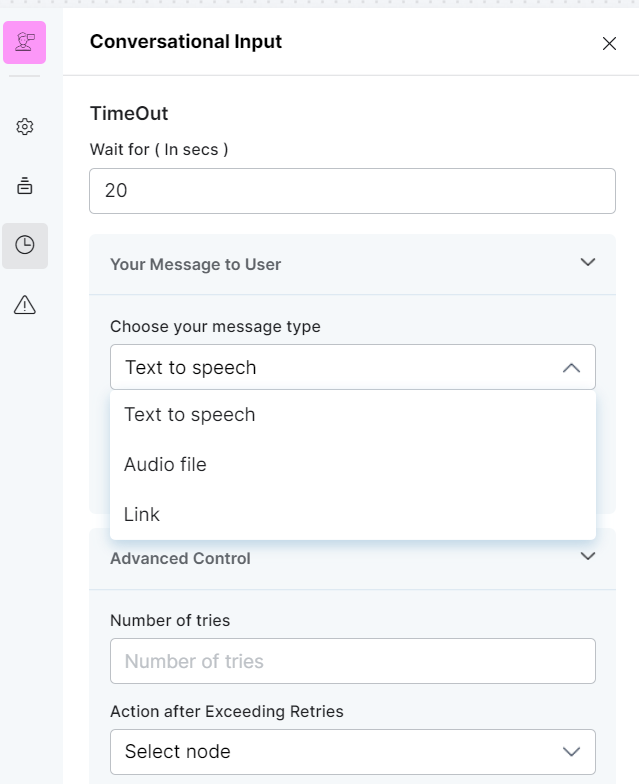
- Your Message to User: For Choose your message type select an option from Text to Speech, Link, or audio; then, type the message, upload an audio file (.mp3 and .wav formats are only supported for audio files), or provide a URL to the error message to be played out to the customer when a timeout event occurs.
8. Under Advanced Control > Number of Tries, type the limit for maximum number of retries allowed for a customer to key in the input.
9. Under Advanced Control > Action after Exceeding Retries, select the node to direct the flow after a timeout has occurred.
10. Click the Error Handling icon and follow the steps to define the fields that will determine how system errors will be handled during runtime.



